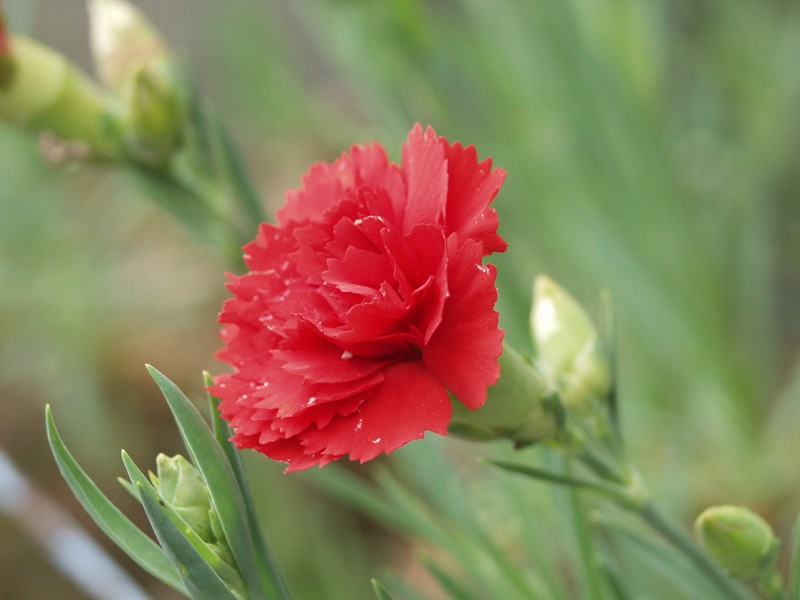January Birth Flower
Last updated on February 29th, 2024 by Editorial Staff
By Naeem Noor | Updated on February 29, 2024
Reviewed by Rittika
The month of January has two birth flowers. The primary birth flower is the carnation, and the secondary flower is the snowdrop.
January birth flower – Carnation
Carnation, scientifically known as Dianthus caryophyllus, is indigenous to the Mediterranean region. Renowned for its distinct ruffled petals and sweet-spicy flavor, carnations are a popular flower that was once used to treat fever in Europe.
It was first imported into the United States in the 1850s, eventually expanding over the world, and within two decades, over 50 different kinds were available.
Carnation, translated from Greek, is commonly referred to as the Flower of the Gods. According to Christian belief, carnations are said to have sprouted from the tears of the Virgin Mary as Jesus was carrying the cross.
Carnations are a symbol of love and fascination but the meanings of each color vary slightly; red carnation represents love, pink carnation represents gratitude, white carnation represents purity, and yellow carnation represents disappointment or rejection.
Carnations are often used in teas, perfumes, desserts, and cosmetics.
Fun fact: Carnations are popular as the official flower for the first wedding anniversaries.
January birth flower – Snowdrop
Snowdrops, scientifically known as Galanthus, are tiny bell-shaped flowers with beautiful white petals. There are green specks on the tiny inner petals.
Snowdrops are native to cooler hilly, woodland, and grassland regions of Europe and the Middle East, but now they have subsequently spread across North America too.
According to legends, the Goddess of spring and nature Persephone was compelled by her uncle Hades to spend the fall and winter in the underworld. When she came back to Earth, she brought snowdrops from the underworld, announcing the arrival of spring. Therefore, becoming one of the earliest flowers to bloom, often emerging from the snow, snowdrops are seen as a symbol of hope, rebirth, and new beginnings.
Snowdrops can convey happiness as well as sympathy. The snowdrop’s pure white color also stands for innocence.
Snowdrops have been used to treat severe nervous system damage. Additionally, it stimulates or accelerates menstrual flow, which makes it possible to cause an early abortion in pregnancy. The snowdrop is believed to have been introduced to Europe for medical purposes by monks and midwives, who used it as a folk medicine for a variety of illnesses.
Fun fact: Snowdrops are named after earrings rather than drops of snow or snowflakes. During the 15th and 17th centuries, women used to wear “ear drops,” which are white drop-shaped earrings that eventually suggested the name of the flower.
January birth flower calendar
- January 1 birth flower
- January 2 birth flower
- January 3 birth flower
- January 4 birth flower
- January 5 birth flower
- January 6 birth flower
- January 7 birth flower
- January 8 birth flower
- January 9 birth flower
- January 10 birth flower
- January 11 birth flower
- January 12 birth flower
- January 13 birth flower
- January 14 birth flower
- January 15 birth flower
- January 16 birth flower
- January 17 birth flower
- January 18 birth flower
- January 1 birth flower
- January 20 birth flower
- January 21 birth flower
- January 22 birth flower
- January 23 birth flower
- January 24 birth flower
- January 25 birth flower
- January 26 birth flower
- January 27 birth flower
- January 28 birth flower
- January 29 birth flower
- January 30 birth flower
- January 31 birth flower
Guess the Flags Quiz
Sharing is caring 🤗

Carnation
| Scientific name | Dianthus caryophyllus |
| Family | Caryophyllaceae |
| Kingdom | Plantae |
| Order | Caryophyllales |

Snowdrop
| Scientific name | Galanthus |
| Family | Amaryllidaceae |
| Kingdom | Plantae |
| Order | Asparagales |
| Sub Family | Amaryllidoideae |
| Tribe | Galantheae |

